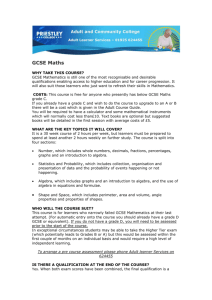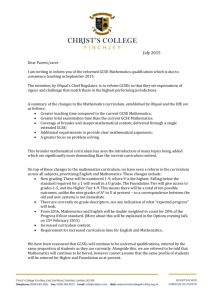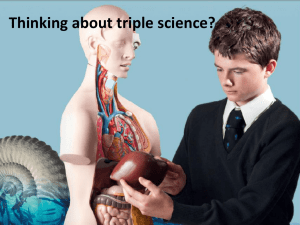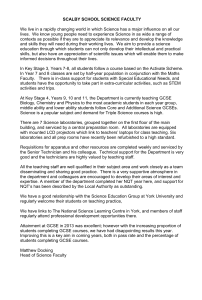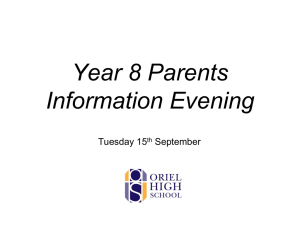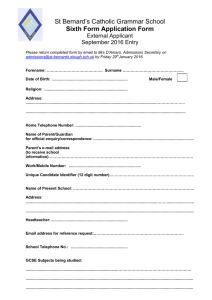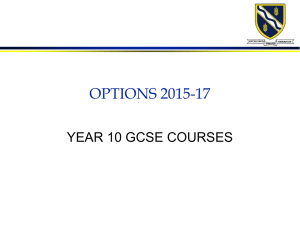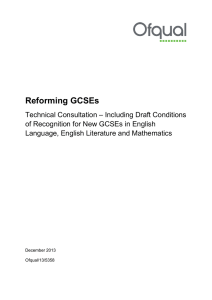Document 10489298
advertisement
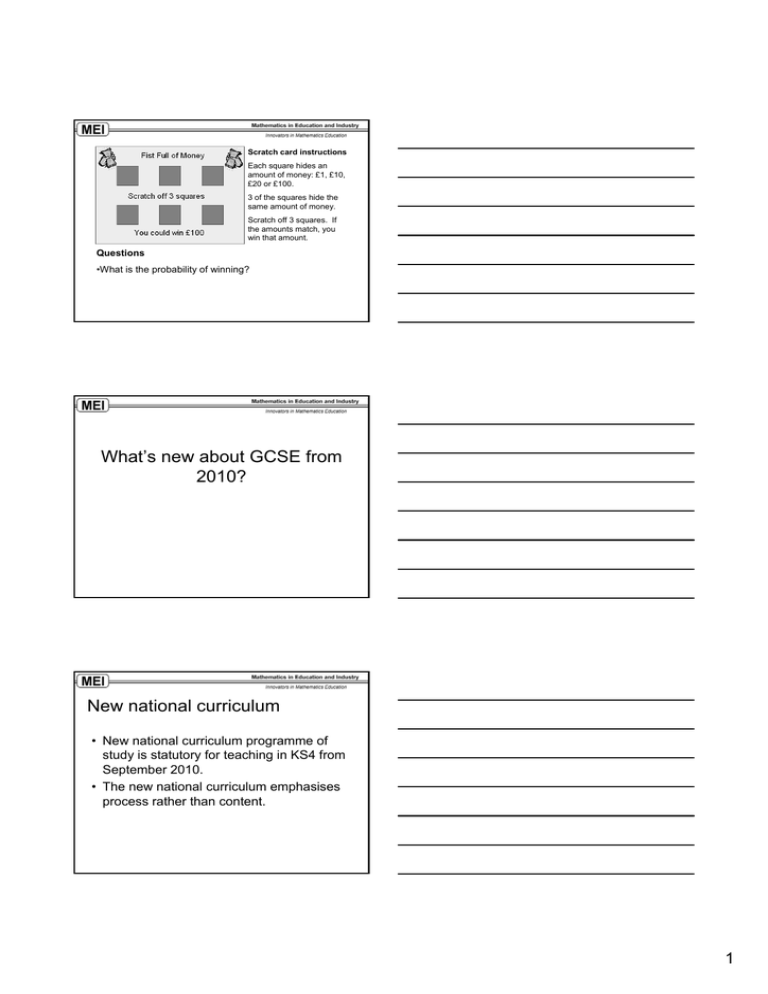
Scratch card instructions Each square hides an amount of money: £1, £10, £20 or £100. 3 of the squares hide the same amount of money. Scratch off 3 squares. If the amounts match, you win that amount. Questions •What is the probability of winning? What’s new about GCSE from 2010? New national curriculum • New national curriculum programme of study is statutory for teaching in KS4 from September 2010. • The new national curriculum emphasises process rather than content. 1 How will GCSE Mathematics change for teaching from 2010? • Different assessment objectives. • Greater emphasis on mathematical reasoning and problem solving. • Incorporation of functional aspects of mathematics; GCSE Mathematics must allocate 20-30% on higher tier and 30-40% on foundation tier for the functional elements of mathematics. What stays the same? • GCSE continues to be available at either Foundation or Higher tier. • It will be entirely externally assessed. • There will continue to be a non-calculator assessment but this need not be 50% of the total. Non-calculator assessment • Current GCSE criteria: “A weighting of 50% of the overall assessment must be allocated to assessments in which candidates may not use a calculator. A weighting of 50% of the assessment must be allocated to assessments in which candidates are permitted to use a calculator.” • New GCSE criteria: “Each scheme of assessment must allocate a minimum weighting of 25 per cent, and a maximum weighting of 50 per cent, to assessment without a calculator.” 2 Much the same • There is no requirement to have specific percentages of marks on number, algebra, geometry and statistics but the papers still have to cover the content of the specification. • There is no requirement to have specific percentages of marks targeted at particular grades but there will still be a range of difficulty of questions. Quality of Written Communication • GCSE qualification criteria say that GCSEs must “assess the candidates' quality of written communication in accordance with the guidance documentation produced by the regulators”. • Questions assessing this are denoted by an asterisk next to the question number. The New Assessment Objectives Assessment objectives Weighting (%) recall and use their knowledge of AO1 the prescribed content 45–55 select and apply mathematical AO2 methods in a range of contexts 25–35 interpret and analyse problems and AO3 generate strategies to solve them. 15–25 3 Piloting of twin GCSEs • Piloting starts for teaching from Sept 2010. • AQA, Edexcel and OCR will each be piloting. • "Applications of Mathematics" (focuses on the application of mathematics in a wide range of real world contexts) • "Methods in Mathematics" (focuses on rigour and the coherent nature of mathematics) Two GCSEs • Students will be entered for both GCSEs. • It is not the intention that the GCSEs are taught as separate courses. • There is some additional content compared to the single GCSE. • During the pilot, achievement of a grade C or above in either of the pilot GCSEs or the single award GCSE will count towards five GCSEs at grades A*–C, including English and mathematics. • Further information on MEI, QCDA and exam board websites. Useful resources • Exam board websites • AQA GCSE Problem-Solving Questions, 2008 - Additional Mathematics • www.nrich.maths.org (for teachers) • www.mei.org.uk (resources section) • http://www.oecd.org/dataoecd/14/10/3870 9418.pdf (released items from PISA) • http://teamat.oxfordjournals.org/cgi/reprint/ 28/1/21.pdf (Open start maths problems) 4

